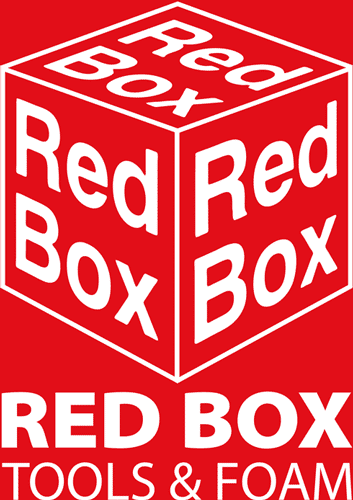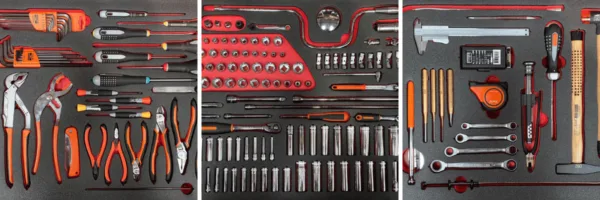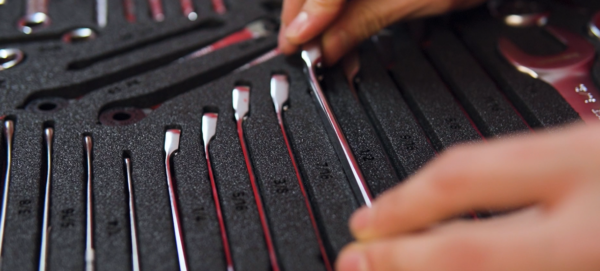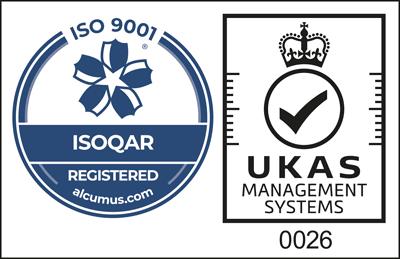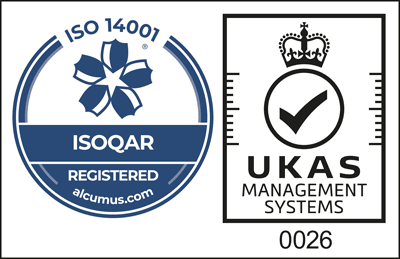In many different industries, from aerospace and automotive to manufacturing and construction, torque wrenches help ensure bolts are tightened to exact specifications. Too loose, and components can fail; too tight, and parts may crack under stress. This is why regular calibration, or aligning tools with predefined accuracy standards, is important.
However, not all torque wrenches require the same maintenance schedule. Although they serve similar purposes, electric and manual torque wrenches differ in design and usage, and this can impact how often calibration is needed. For expert calibration services, trusted providers can help restore tools for top performance.
Keep reading as we break down the factors influencing calibration needs for each torque wrench type so you can make an informed decision about tool maintenance.

Understanding Torque Wrench Calibration
Calibration ensures that a torque wrench delivers accurate and consistent force, which is also important when it comes to safety, quality control and equipment longevity. Over time, frequent use, environmental conditions and improper handling can cause torque wrenches to experience calibration drift, also known as a loss of accuracy.
To address this, the calibration process involves testing the wrench against known standards and then making adjustments as needed.
Why Regular Calibration Matters
Calibration is a maintenance process that helps the equipment used to manufacture products to produce consistent, reliable results. Here’s why you should never delay or skip routine calibration:
- Uncalibrated tools could apply too much or too little force, resulting in defective products or dangerous failures.
- Catching wear and tear early through calibration can extend the life of your tools and prevent costly replacements.
- Many industries have strict standards for calibrated tools. Falling to comply can lead to failed audits, product recalls or legal issues.
While electric and manual torque wrenches require periodic calibration, their design differences and usage frequency affect how often this is necessary.
Calibration Needs for Electric Torque Wrenches
Electric torque wrenches are known for their advanced features that boost precision and convenience in high-demand settings. These tools are equipped with electronic components, such as built-in sensors and digital displays, that enhance accuracy and provide real-time feedback. However, these same features also make electric torque wrenches more likely to experience calibration drift over time.
Factors influencing the calibration needs of electric torque wrenches include:
- Regular, intensive use, which can lead to wear on internal components and require calibration more often.
- Exposure to extreme temperatures, humidity or dust can affect the performance of sensitive electronic parts.
- Since electric wrenches rely on power, fluctuating battery performance can also impact calibration stability.
Even though electric torque wrenches offer top-notch precision, their complexity calls for a proactive approach to calibration. Following a consistent maintenance schedule can help you ensure that these tools continue to deliver accurate results for your projects while maintaining their longevity.
Calibration Needs for Manual Torque Wrenches
Manual torque wrenches are often praised for their simplicity and durability, since they rely on more basic mechanical components to deliver precise torque. Unlike their electric counterparts, they do not have electronic systems, which makes them less prone to issues related to power or sensor malfunctions. However, this does not mean they are maintenance-free.
Factors influencing the calibration needs of manual torque wrenches include:
- Improper handling, such as over-tightening or dropping the tool, can lead to mechanical wear and misalignment, necessitating recalibration.
- While durable, frequent or high-force applications can gradually degrade the tool’s accuracy.
- Prolonged exposure to moisture or dust in storage can cause corrosion or internal wear.
Although manual torque wrenches may require less frequent calibration compared to electric models, regular checks are still essential to make sure they are functioning properly. Proper handling and storage can further extend the time between calibration, which helps reduce maintenance needs while maintaining performance over time.
Comparing Calibration Needs: Electric vs. Manual Torque Wrenches
Both electric and manual torque wrenches require calibration, but the factors that influence how often this needs to occur depend on their design and usage. Electric models, with their advanced features, tend to need more frequent calibration, while manual wrenches are simpler and generally require less maintenance. The chart below provides a detailed comparison to help you understand the specific needs of each type.
| Electric Torque Wrenches | Manual Torque Wrenches | |
| Design Complexity | Equipped with electronic components like sensors and digital displays, requiring more care | Simple mechanical design with fewer components to maintain |
| Calibration Frequency | Requires more frequent calibration due to sensor sensitivity and battery performance | Requires less frequent calibration, but external factors like handling are critical |
| Influencing Factors | – Frequent use causes wear on internal components – Sensitive to environmental conditions (e.g., temperature, humidity) – Battery health impacts performance | – Improper handling (e.g., dropping, over-tightening) can cause wear – High-force applications degrade accuracy – Storage conditions (e.g., moisture, dust) affect longevity |
| Maintenance Focus | Proactive calibration schedule to manage electronic drift and ensure consistency | Proper handling and storage extend calibration intervals and maintain reliability |
| Ideal Use Case | High-precision, high-demand applications where real-time feedback is crucial | Low-complexity, high-reliability tasks where precision is needed without advanced features |
Electric torque wrenches, while more advanced, require a higher level of upkeep due to their reliance on sensitive electronic systems. This makes them ideal for industries that need precision in complex tasks, but it also means they should be calibrated frequently to avoid performance issues.
Manual torque wrenches, on the other hand, may be more effective in simpler applications. While they are less maintenance-intensive, proper care, including safe handling and storage, is required to prevent avoidable damage.
Prioritize Calibration for Precision and Safety
Calibration is an important maintenance step that helps your tools to perform as intended. Without it, your business could face costly errors, compliance issues and reputational risks. Implementing an efficient and proactive calibration system not only protects your operations but also supports safety, reliability and long-term success.
While there’s no universal rule for calibration frequency, most torque wrenches require service at least once per year. Some providers’ calibration services include a calibration certificate with a due date for the next recommended service, so you can be sure your tools remain compliant and accurate. However, depending on usage intensity and environmental factors, more frequent calibration may be necessary to maintain optimal performance.
Ready to get organised?
Find your perfect tool storage from our professional range
From tool bags and tool chests to tool boxes with wheels, tool belts, tool cases, and trade-specific tool storage, at Red Box Tools we offer high-quality solutions you can count on.

